Publications News
Claudio Silva Coauthor on 2nd Most Cited Paper in TVCG 15-Year History
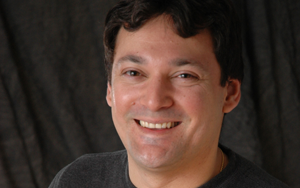 In celebration of the 15th anniversary of IEEE Transactions on Visualization and Computer Graphics, a top 10 list of the most cited papers was compiled to illustrate the success of the journal. Second on the list was a paper by Marc Alexa, Johannes Behr, Daniel Cohen-Or, Shachar Fleishman, David Levin, and Claudio Silva entitled, "Computing and Rendering Point Set Surfaces". To date, it has been cited 574 times according to Google Scholar. This paper introduced a new technique for modeling surfaces out of point samples by means of a moving least squares (MLS) projection approach. It also contain a number of applications, including techniques for resampling and rendering point sets. This general approach became increasingly popular following the publication of this paper.
In celebration of the 15th anniversary of IEEE Transactions on Visualization and Computer Graphics, a top 10 list of the most cited papers was compiled to illustrate the success of the journal. Second on the list was a paper by Marc Alexa, Johannes Behr, Daniel Cohen-Or, Shachar Fleishman, David Levin, and Claudio Silva entitled, "Computing and Rendering Point Set Surfaces". To date, it has been cited 574 times according to Google Scholar. This paper introduced a new technique for modeling surfaces out of point samples by means of a moving least squares (MLS) projection approach. It also contain a number of applications, including techniques for resampling and rendering point sets. This general approach became increasingly popular following the publication of this paper.
Best Paper Awards Keep on Coming
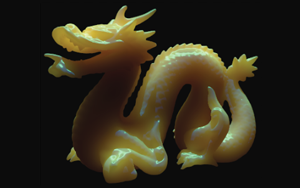 Daniel Kopta, who was part of the author team that received the Best Paper Award at SASP '08 for their paper: "TRaX: A Multi-Threaded Architecture for Real-Time Ray Tracing," Josef Spjut, Daniel Kopta, Spencer Kellis, Solomon Boulos, Erik Brunvand
Daniel Kopta, who was part of the author team that received the Best Paper Award at SASP '08 for their paper: "TRaX: A Multi-Threaded Architecture for Real-Time Ray Tracing," Josef Spjut, Daniel Kopta, Spencer Kellis, Solomon Boulos, Erik BrunvandDavid Brayford, received the Ken Brodlie best paper prize at the Theory and Practice of Computer Graphics 2008 Conference (TPCG08) for his paper "A Physical Model for the Polarized Scattering of Light."
Mike Kirby, Tobias Martin, and Elaine Cohen, best Paper Award at the ACM Solid and Physical Modeling International Conference (SPM) 2008 for "Volumetric Parameterization and Trivariate B-spline Fitting using Harmonic Functions" by Tobias Martin, Elaine Cohen, and Mike Kirby.
Hao Wang, Carlos Scheidegger, and Claudio Silva won the Best Paper Award at the IEEE International Conference on Shape Modeling and Applications (SMI), 2008 with "Optimal Bandwidth Selection for MLS Surfaces."
Best Paper at Vis 2007
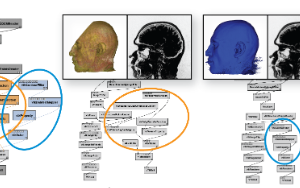 The paper "Querying and Creating Visualizations by Analogy", by Carlos E. Scheidegger, Huy T. Vo, David Koop, Juliana Freire, and Cláudio Silva was selected as the "Best Paper" at IEEE Visualization 2007. In this paper, the authors introduce a new framework that allows users who are not necessarily programmers to query and refine pipelines (or workflows) by analogy. They describe a query-by-example interface which allows users to construct as complex, structure-based queries (e.g., find workflows that resample a data set before extracting an isurface) by example, using the same interface used to build pipelines. They also introduce analogy as a first-class operation to create and refine pipelines. The analogy operation allows casual users to modify pipelines without having to directly edit their definitions. These features have been implemented in their open-source workflow and provenance management system called VisTrails, which can be downloaded from the SCI Website.
The paper "Querying and Creating Visualizations by Analogy", by Carlos E. Scheidegger, Huy T. Vo, David Koop, Juliana Freire, and Cláudio Silva was selected as the "Best Paper" at IEEE Visualization 2007. In this paper, the authors introduce a new framework that allows users who are not necessarily programmers to query and refine pipelines (or workflows) by analogy. They describe a query-by-example interface which allows users to construct as complex, structure-based queries (e.g., find workflows that resample a data set before extracting an isurface) by example, using the same interface used to build pipelines. They also introduce analogy as a first-class operation to create and refine pipelines. The analogy operation allows casual users to modify pipelines without having to directly edit their definitions. These features have been implemented in their open-source workflow and provenance management system called VisTrails, which can be downloaded from the SCI Website.
SCI Announces the Publication of "The Visualization Handbook"
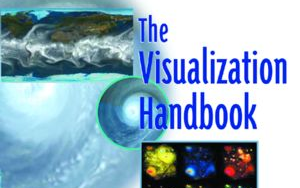 The SCI Institute announces the publication of "The Visualization Handbook," edited by two of SCI visualization faculty, Prof. Charles D. Hansen and Prof. Christopher R. Johnson. This book brings together top experts in the field of scientific visualization to cover state of the art techniques being applied to current scientific problems. A number of the SCI Institute's faculty, research staff, and Ph.D. students have also contributed to the book including Prof. Stephen G. Parker, Prof. Yarden Livnat, Prof. Mike Kirby, Dr. Gordon Kindlmann, Dr. Xavier Tricoche, Joe Kniss, Milan Ikits, and Dean Brederson. Copies may be purchased on the Elsevier web site.
The SCI Institute announces the publication of "The Visualization Handbook," edited by two of SCI visualization faculty, Prof. Charles D. Hansen and Prof. Christopher R. Johnson. This book brings together top experts in the field of scientific visualization to cover state of the art techniques being applied to current scientific problems. A number of the SCI Institute's faculty, research staff, and Ph.D. students have also contributed to the book including Prof. Stephen G. Parker, Prof. Yarden Livnat, Prof. Mike Kirby, Dr. Gordon Kindlmann, Dr. Xavier Tricoche, Joe Kniss, Milan Ikits, and Dean Brederson. Copies may be purchased on the Elsevier web site.
Best Paper Award at Vis 2001
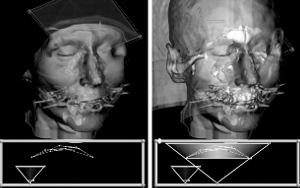 At the IEEE Visualization 2001 conference in San Diego, Joe Kniss, Gordon Kindlmann, and Chuck Hansen of the SCI Institute were awarded "Best Paper" for "Interactive Volume Rendering with Multi-dimensional Transfer Functions and Direct Manipulation Widgets." This paper focuses on the added value of higher dimensional transfer functions and attempts to solve the complexity of using them with an integrated system. The system features a user interface that joins interactions in both the spatial domain (volume rendering) and transfer function domain, while taking advantage of modern graphics hardware to make it interactive.
At the IEEE Visualization 2001 conference in San Diego, Joe Kniss, Gordon Kindlmann, and Chuck Hansen of the SCI Institute were awarded "Best Paper" for "Interactive Volume Rendering with Multi-dimensional Transfer Functions and Direct Manipulation Widgets." This paper focuses on the added value of higher dimensional transfer functions and attempts to solve the complexity of using them with an integrated system. The system features a user interface that joins interactions in both the spatial domain (volume rendering) and transfer function domain, while taking advantage of modern graphics hardware to make it interactive.




